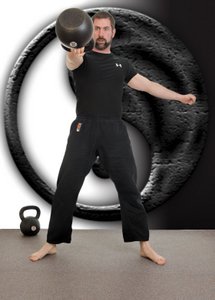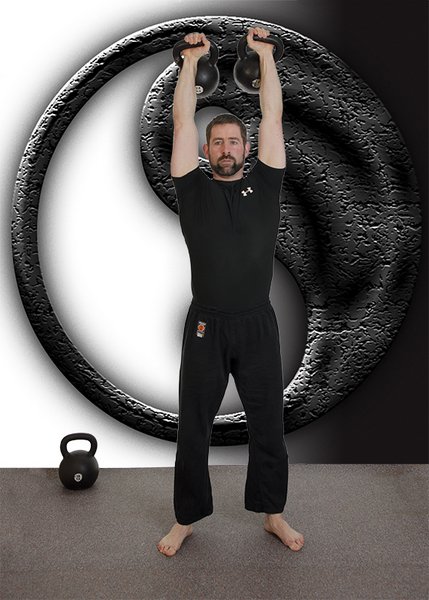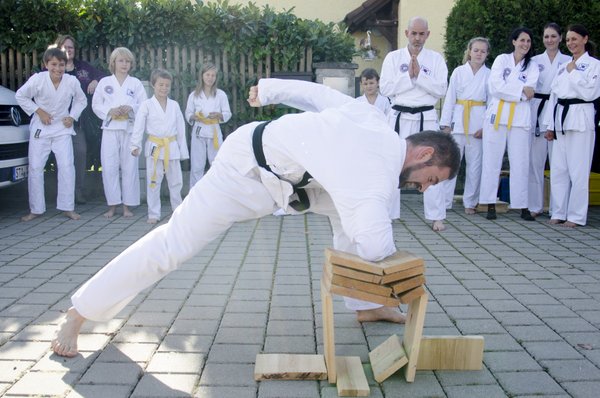 I was introduced to this term years ago when I worked as an IT Consultant for a German automotive supplier. I learned that it was this ancient Japanese concept that transformed Toyota from a small and inefficient car manufacturer into the de facto worldwide industry leader in production efficiency and accuracy. Today virtually all major car manufacturers use the Just in Time concepts invented by Toyota to produce their products. These concepts can save tons of money in production costs while maximizing quality at the same time.
I was introduced to this term years ago when I worked as an IT Consultant for a German automotive supplier. I learned that it was this ancient Japanese concept that transformed Toyota from a small and inefficient car manufacturer into the de facto worldwide industry leader in production efficiency and accuracy. Today virtually all major car manufacturers use the Just in Time concepts invented by Toyota to produce their products. These concepts can save tons of money in production costs while maximizing quality at the same time.
At this point you might think: “And what has this to do with me? I’m a fitness professional!”
Think again! What kind of results might a simple concept—with the power to turn a young company that started out producing the cheapest and most error prone cars on this planet into an industry leader in a few short years—produce if applied to your business or training?
Interested? Then stay with me.
What is Kaizen?
The roots of this concept lie deep in the Japanese culture. It has enabled people to create some of the most magnificent works of art and craft in history. The approach is simple and yet extremely efficient in itself.
Instead of working their butts off until a project is finished or has completely failed (as most westerners tend to do) the ancient Japanese would regularly sit down and assess the process of creation and make minor adjustments along the way. This way they can gain a much deeper understanding of the task at hand, enabling them to complete it easier with better results.
 Kaizen and the Hardstyle Kettlebell
Kaizen and the Hardstyle Kettlebell
For us as Trainers…
Applied to training this might be the idea of starting out with a given program and adjusting it little by little to create the most effective version of that program along the way—instead of running a full cycle of it then looking at the results and starting over with a completely new program if they are less than satisfactory.
Kaizen is about digging deep into the process and learning how to execute it in the most efficient way during the process, rather than assessing the results and making adjustments afterwards. In a way this fits nicely to our Hardstyle approach for kettlebell training. Instead of banging out as many reps as possible and adding as much weight as possible to any given move, we try to improve the technical execution of the exercise to make it as powerful and crisp as possible.
The biggest problem with Kaizen for our western minds is that it takes more effort to track the improvement because the changes are incremental. If you improve your swing, making it more powerful while keeping the weight and reps the same, it is difficult to assess your progress. In contrast, if you step up in volume or weight, the progress can be easily seen by anybody. However, my experience tells me that stepping up in volume or weight too fast can hinder your progress—especially with the ballistics.
What can Kaizen do for your Business?
The biggest impact of using the Kaizen approach will be to your business. Whether you are an independent trainer or a gym owner you will profit from it by:
- The almost automatic adaptation to changes in your environment.
- You can avoid reorganizing your business, which can be a pain and will always lessen your income.
- You will have the systems in place to respond quickly to your customer’s needs
- Your employees will feel like they can actively influence their work environment and will be happier and more productive.
When I used to work for Microsoft as an IT Consultant, they had the policy of reorganizing the entire company every other year. Aside from the obvious—adapting to a fast changing market environment—the idea was to keep the company (and especially the employees) agile and hinder the growth of rigid structures. However the reorgs where a pain for most the employees and often did not make a lot of sense. Even a small business like a garage gym can be quite complex and it can be difficult to predict the side effects of a major change. By keeping the changes small and confined, you can avoid disturbances and more easily observe which changes are effective and which are not.
Take advantage of the Kaizen approach in 5 easy steps
Step 1: Know your Destination
This should be clear but every so often I meet trainers who do not think about what they want to achieve. We are an industry of enthusiasts, who do what we love. People whose first priority is making money work in banks or sell insurance contracts. Don’t get me wrong, doing the things you love for a living is the best thing you can do for yourself and your environment, but if you do something for a living it must sustain your lifestyle. Training 10 people in your garage gym is a nice pastime but it won’t pay your bills.
So, you need to be clear about where your business should be next year, the year after, or in five years. Knowing your destination gives you the means to navigate through the chances and risks of your daily business and eventually arrive somewhere.
If you are a trainer in a gym, you might have the feeling that this is something you don’t have to worry about. But please follow me on a little thought experiment. First take a moment to sit down and ponder the ups and downs of your daily job. Now try to picture yourself in 10 – 15 years doing the same job you do today (considering factors like family, children, getting older). If this is a pleasant thing to imagine, then congratulations on having the job of your life. If not, you need to decide where you want to go from here.

Step 2: Embrace Change
There is a German saying that goes like this:
“If the wind of change is blowing, some people build walls – others build windmills”
Make sure you belong to the latter group. For many of us it is quite unsettling that everything is constantly changing. If that is the case for you, think of it this way—the only thing that is truly constant is CHANGE. If you expect and anticipate changes to happen, you can probably profit from them. If you try to keep things as they are today, it is only a question of when you will be overtaken by reality.
Step 3: Take time to analyze your situation
This is hard, but absolutely critical. If you are like me, sometimes it feels like everything happens at the same time and you have barely time to react to the most urgent demands. However you can succeed in the long run if you are reactive mode. It is absolutely critical that you make it a habit to regularly assess your situation. Only this can give you the power to improve your situation and avoid problems.
- Actively ask for feedback. Whether they are your clients, employees, or business partners actively ask them to tell you what they like and what could be improved.
- Make sure your clients have the means to give you anonymous feedback. If you wait until they are prepared to tell you to your face, you have probably lost them as a customer.
- Have a regular meeting with your staff to you ask them for their take on what’s going on. In this meeting you should also collect ideas about what could be improved.
- Take time to ponder the information you’ve gained on a regular basis. Have a scheduled time at least once a month to review all the information. This can be a done on your own, but if you have employees or coworkers it may be more productive if you have them with you.
Appreciate all feedback whether it is good or bad.
All information you gain about your business is valuable—whether or not it makes you feel good. If you follow the steps I laid out, you will soon realize that negative feedback is actually much more valuable than praise. Praise is good for marketing, but moaning and groaning improves your business.
As an RKC Instructor you will be used to receiving good Feedback from your Clients, but do not fall into the trap of assuming the few who tell you are otherwise are weirdoes or moaners – they are probably those clients who trust you most and want you to succeed.
Step 4: Act
Whenever your sources have brought something which can be improved to your attention, determine if you have the means to improve it. In many cases, it will not take a big budget or much planning to implement smaller improvements. Go for the quick wins first instead of the big projects. The bigger the change, the more risk is involved.

Step 5: If you do not act, explain why.
To gain the information you need to steer your business, you rely on the people around you. It’s in your best interest that they continue sharing their opinions with you, and they will continue to if they feel their voices are heard. There is nothing more frustrating than sharing information to help the business improve only to see no improvement or reaction . Make sure you spare the people around you this frustration.
He writes a regular Blog at blog.kettlebellgermany.de and offers workshops all over Germany teaching the RKC Kettlebell exercises: KettlebellGermany.de.
If you have questions or comment on the article feel free to email him at florian@kettlebellgermany.de